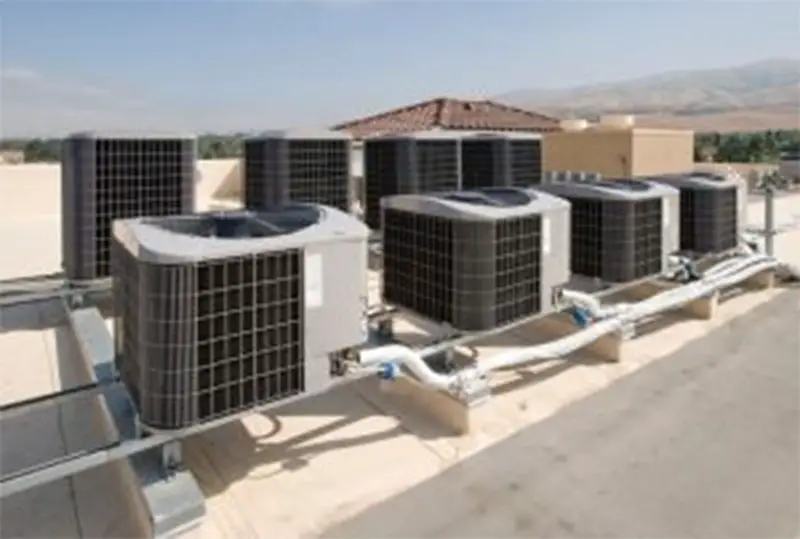Rooftop HVAC units are an increasingly popular choice for commercial buildings due to their space-saving design, improved air quality, ease of installation and maintenance, and cost-effectiveness. However, as with any system, there are pros and cons to consider before deciding on a rooftop unit for your building. In this article, we will explore the benefits and drawbacks of rooftop HVAC units, compare them with other HVAC systems, and discuss the factors to consider when choosing a rooftop unit.
Introduction
Commercial buildings have unique HVAC needs that require specialized systems to provide heating and cooling throughout the building. Rooftop HVAC units have become popular for these buildings due to their space-saving design and cost-effectiveness. However, as with any system, there are pros and cons to consider before deciding on a rooftop unit for your building.
The Pros of Rooftop HVAC Units
Space-Saving Design
One of the main benefits of rooftop HVAC units is their space-saving design. Unlike other HVAC systems, rooftop units are installed on the roof of the building, freeing up indoor space for other uses. This can be particularly beneficial for smaller commercial buildings that may have limited indoor space.
Improved Air Quality
Rooftop HVAC units can improve the air quality in commercial buildings by providing fresh air through outdoor air intakes. This can help to reduce the spread of germs and pollutants throughout the building, creating a healthier and more comfortable environment for tenants.
Easy Installation and Maintenance
Another advantage of rooftop HVAC units is their ease of installation and maintenance. Rooftop units can be installed quickly and easily, often requiring less time and labor than other HVAC systems. Additionally, rooftop units are easily accessible for maintenance and repairs, which can help to reduce maintenance costs and downtime.
Cost-Effective
Rooftop HVAC units are generally less expensive than other HVAC systems, making them a cost-effective option for commercial buildings. Additionally, rooftop units are designed to be energy-efficient, which can result in significant cost savings over time. Building owners can make informed decisions when selecting and maintaining their systems by understanding the factors that contribute to commercial HVAC costs.
The Cons of Rooftop HVAC Units
Noise Pollution
One of the main drawbacks of rooftop HVAC units is the noise pollution they can generate. Rooftop units can be loud, which can be a source of complaints from tenants or neighboring buildings.
Weather Exposure
Rooftop units are exposed to the elements, which can lead to weather-related damage and wear and tear over time. This can result in increased maintenance and repair costs for building owners.
Limited Accessibility
Because rooftop units are located on the roof of the building, they can be difficult to access for maintenance and repairs. This can result in increased labor costs for servicing the units.
Lack of Aesthetics
Rooftop units are not aesthetically pleasing and can be a deterrent for building owners who want their buildings to look attractive and modern. Additionally, rooftop units can be a source of complaints from tenants or neighboring buildings who find them unsightly.
Comparison with Other HVAC Systems
Central HVAC Systems
Central HVAC systems are common in larger commercial buildings. They consist of a central unit that distributes heating and cooling to different parts of the building through a system of ducts. While central systems are efficient and can provide consistent temperatures throughout the building, they can be expensive to install and maintain. They also require a significant amount of indoor space for the ductwork.
Split HVAC Systems
Split HVAC systems are similar to central systems but are better suited for smaller commercial buildings. They consist of an outdoor unit that houses the compressor and condenser, and an indoor unit that provides heating and cooling to individual rooms. Split systems are energy-efficient and easy to install, but they can be noisy and may require multiple units to adequately heat or cool the entire building.
Packaged HVAC Systems
Packaged HVAC systems are similar to rooftop units but are designed for indoor installation. They consist of a single unit that provides heating and cooling to the entire building through a system of ducts. While packaged systems are energy-efficient and easy to install, they require indoor space for installation and can be difficult to access for maintenance and repairs.
Factors to Consider When Choosing a Rooftop HVAC Unit
Building Size and Type
The size and type of the building will play a significant role in determining the appropriate size and type of rooftop HVAC unit. Larger buildings may require multiple units or a central system, while smaller buildings may be adequately served by a single rooftop unit.
Climate
The climate of the building’s location will also play a role in determining the appropriate rooftop HVAC unit. Buildings located in areas with extreme temperatures may require units with higher heating or cooling capacities.
Energy Efficiency
Energy efficiency is a crucial factor to consider when choosing a rooftop HVAC unit. Look for units with high SEER (Seasonal Energy Efficiency Ratio) or EER (Energy Efficiency Ratio) ratings to reduce energy consumption and lower energy costs.
Noise Level
The noise level of the rooftop unit is an important consideration, particularly for buildings located in residential or quiet areas. Look for units with low decibel ratings to minimize noise pollution.
Maintenance and Repairs
Consider the ease of access to the rooftop unit for maintenance and repairs. Look for units with easy-to-replace parts and components and consider the availability of qualified technicians in the area.
Conclusion
Rooftop HVAC units have advantages and disadvantages compared to other HVAC systems. While they are space-saving, cost-effective, and easy to install and maintain, they can be noisy and unsightly and may be subject to weather-related damage. When choosing a rooftop unit for a commercial building, consider the building size and type, climate, energy efficiency, noise level, and ease of maintenance and repairs. By carefully weighing the pros and cons and choosing the appropriate unit for the building’s needs, building owners can ensure a comfortable and efficient HVAC system for their tenants.
